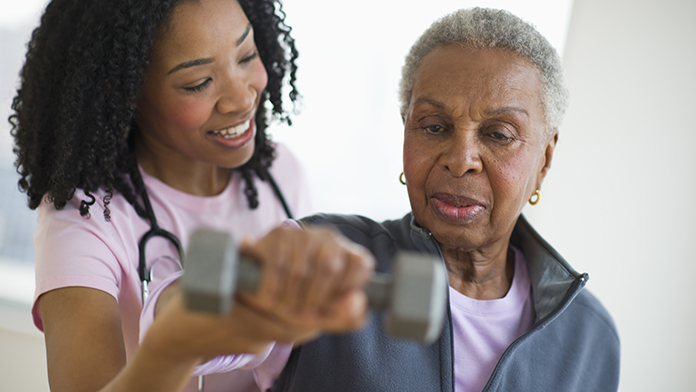The information you will be accessing is provided by another organization or vendor. If you do not intend to leave our site, close this message.
D-SNP home page > Health tips & tools > Know where to go for medical care
Know where to go for medical care
Your doctor, urgent care, the emergency room, a walk-in clinic — knowing where to go for a sudden illness or injury isn’t always clear. Use these guidelines to understand your options when choosing your care.
 By Kate Rockwood
By Kate Rockwood

Urgent care centers are popping up everywhere. And walk-in clinics are in drugstores and supermarkets. That makes it easier than ever to get the care you need when you need it. But how do you know if it’s okay to wait a day or two for an appointment with your doctor? Or whether you should go to a walk-in or urgent care facility — or rush to the emergency room (ER)?
Each one offers a different level of care and expertise. Understanding the differences can help you make the best decision. The right choice can save you time and money. And it can help ensure you get the care you may need. Here’s a simple overview of where to go and when.
Your primary care provider
First and foremost, experts say it’s important to see your primary care provider (PCP) at least once a year for a checkup. It’s necessary even if you feel fine. “A PCP should be seen at least yearly for well visits,” says Paul Coyne. He’s the vice president of clinical practice and chief nursing informatics officer at the Hospital for Special Surgery in New York City. Your PCP can:
- Discuss any ongoing concerns about your health
- Coordinate care between different specialists
- Provide optimal management for your individual health
In addition to routine physicals, your primary doctor should be the first place you call when:
- You want a prescription refilled.
- You need help managing a chronic condition.
- You’ve come down with a bug.
“As long as a patient isn’t in critical condition or very ill, it is always good to try to get ahold of your primary care doctor first, if possible,” says Phillip Kadaj, M.D. He’s an internist in Midland, Michigan. “Not only does your primary care doctor know you, they may be able to see you instead of going to urgent care, the ER or a walk-in clinic. Good primary care relationships have been shown to reduce costs and improve care for both patients and health systems.”
One common problem, though: Doctor offices are usually open only on weekdays during business hours. That’s why many doctors have an after-hours answering service. If you have a pressing health concern at night or over the weekend, you can leave a message. You’ll get a call back from an on-call health care worker.
A walk-in clinic
As the name suggests, most walk-in clinics don’t require an appointment. They see patients on a first-come, first-served basis. The wait time will depend on how many other people walked in ahead of you. You might be called within 15 minutes or have to wait a couple of hours. However, restrictions are often changing due to the pandemic. So it’s a good idea to check with the clinic to see if an appointment is recommended.
It’s also good to know that walk-in clinics might not have a doctor on staff. They’re usually staffed by nurse practitioners and physician assistants who can:
- Treat minor injuries
- Diagnose common ailments
- Check blood pressure
- Give immunizations (such as the flu shot and COVID-19 vaccine)
- Prescribe or refill medication
Many walk-in clinics, like a MinuteClinic®, are located in or near pharmacies. That makes picking up your medications very easy. Some walk-in clinics also have a specialty area, such as optometry, orthopedics or mental health.
If you have a cold, sore throat or sprained elbow, and you can’t get an appointment with your doctor? If so, a walk-in clinic might be the most convenient and affordable alternative. But if you have a severe injury or serious illness, a walk-in clinic will probably not be equipped to handle your care.
An urgent care center
In some ways, urgent care centers are a lot like walk-in clinics. You can walk in without an appointment. Many of them also allow you to book an appointment. That can cut down your wait time significantly. But unlike walk-in clinics, urgent care centers do have a doctor on staff. And they have more capabilities in terms of diagnoses and treatments. For example, they may have X-ray machines and can treat broken wrists or ankles.
In addition to broken bones, you can go to an urgent care center for:
- Nausea
- Vomiting
- Diarrhea
- Rashes
- Fever
- Cuts that require stitches
“The urgent care is one step below the ER,” Dr. Kadaj says. “They generally have providers that are well-trained to handle a variety of conditions. But they may not have the equipment available to diagnose and treat things like heart attacks, strokes or major trauma.”
Coyne stresses that urgent care “should not be confused with an emergency room, as it is not meant to care for true emergencies.”
The emergency room
“If you think that your condition might cause death or disability in the very near future, please go to an emergency room,” says Grace Chen O’Neil, M.D. She’s a fellow of the American College of Emergency Physicians. Same goes if you think you will probably have to have surgery or be admitted to the hospital for the treatment of a condition, says Dr. O’Neil.
Go to the emergency room immediately if you have:
- Chest pain
- Difficulty breathing
- Sudden changes in mental ability
- Slurred speech
- Uncontrollable bleeding
- A major broken bone
- A head injury
- Sudden loss of vision
- Seizures
What about 911? If you’re in a life-threatening situation or are alone and not sure you can drive yourself to the ER, call 911. For example, if you have chest pain, call 911 — it could signal a heart attack. Same goes if you’re having any symptoms of stroke, including:
- Facial drooping
- Sudden numbness or weakness in the face, arms or legs
- Sudden difficulty with vision
- Sudden confusion or difficulty speaking
- Sudden loss of coordination or balance
If any of these symptoms happen, “even if in the company of others, it is always safer to call 911, as paramedics can begin treatment immediately,” Coyne says. “In a cardiac arrest, this can mean the difference between survival or death.”
But if you’re not having a true emergency, there are several good reasons to avoid the ER. For one thing, ERs take patients in order of severity. So you could end up waiting a very long time to be seen. It’s also not a good use of emergency doctors’ time and equipment.
Still not sure where to go for care? Some plans have a 24/7 nurse line you can call for round-the-clock health guidance. Or err on the side of caution and head to the hospital, says Dr. Kadaj.
Disclaimers
See Evidence of Coverage for a complete description of plan benefits, exclusions, limitations and conditions of coverage. Plan features and availability may vary by service area.



